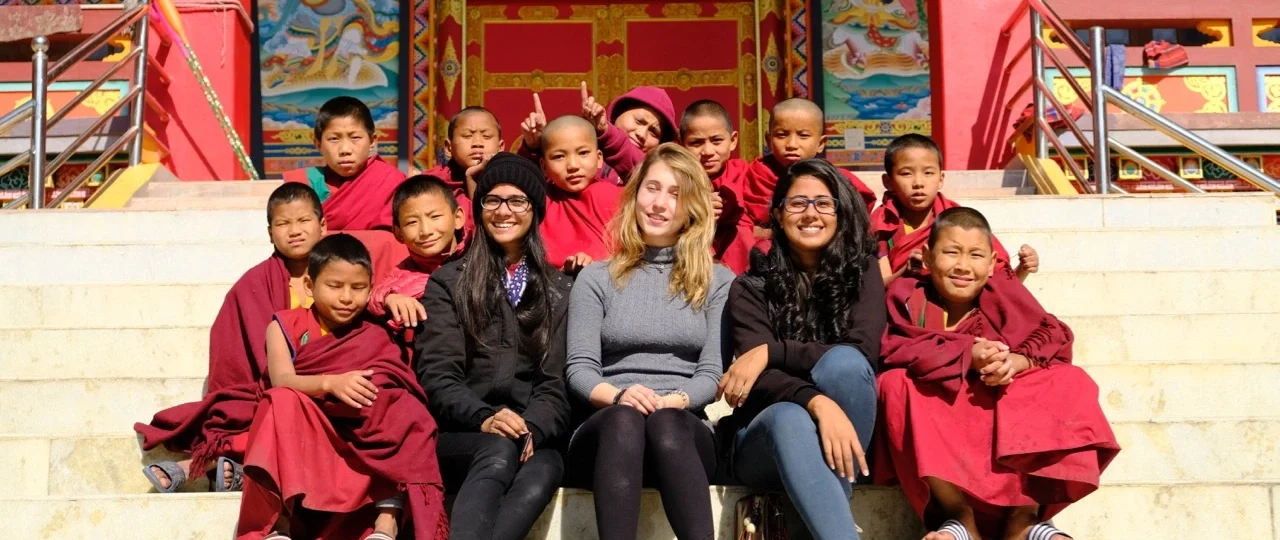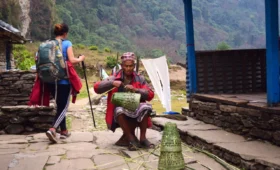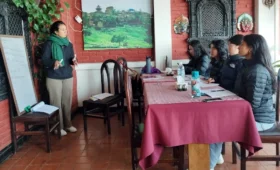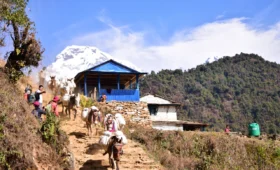The ideal time to visit Nepal is during the months of October through to November, when the weather is pleasant with clear blue skies and warm temperatures. Additionally, the post-monsoon season brings an abundance of vegetation, making these months the best time to explore Nepal.
Nepal offers consistently favorable weather throughout the year, making it an exceptional destination to visit. For those seeking to avoid the peak tourist period while still enjoying pleasant weather, mid-September, nestled between the summer monsoon and the peak season, is an ideal time to visit. Even after the main tourist season concludes, the months from December to May continue to provide an excellent opportunity to explore Nepal. Particularly between March and May, temperatures rise, creating optimal conditions for trekking in the Himalayas. We invite you to explore our comprehensive range of experiences in Nepal.
The ideal months to visit Nepal are outside of the summer monsoon. Nepal offers consistently good weather throughout the year, making it a superb destination to visit year-round. For those who wish to avoid the main tourist period but still enjoy excellent weather, mid-September is an excellent time to visit. Following the peak season and the end of the monsoon, the months between December and May are also a great time to explore Nepal. In particular, the period between March and May is perfect for trekking in the Himalayas as the temperatures increase. We invite you to explore our full selection of experiences in Nepal.
Coldest Months in Nepal
Visiting the southern areas of Nepal, like Chitwan National Park, during December to February is advisable due to the clear blue skies and minimal rainfall, despite being some of the coldest months in the country. However, it is not recommended to engage in high altitude trekking during this period.
November to February
The ideal time to visit Chitwan National Park is during the months of November to February, as the weather is pleasant and there is minimal rainfall. In early November, the southern plains of Nepal experience cooler temperatures, with daytime temperatures reaching approximately 25°C. This is also the time when newly created watering holes attract a large number of wildlife, including migrating birds. As the months progress, temperatures gradually decrease, with January being the coolest month, averaging around 18°C during the day. These cooler temperatures are perfect for exploring the park on foot and also encourage animals to be more active during the day. However, the best time to spot wildlife in Chitwan is from late-January onwards, when the locals cut the tall elephant grass, making it easier to spot animals from a distance.
March – May
Temperatures in Southern Nepal experience a rapid increase during these months, reaching an average of 35°C in May. While March and April in Chitwan are typically dry, the rainy season in southern Nepal commences in May, bringing the first significant rainfall after the dry winter months. The number of rainy days rises from 7 in April to 19 days in May. Similar to the rest of Nepal, the impending monsoon leads to a rise in humidity levels, reaching 65% in May. Although this period may not be the ideal time to visit Chitwan National Park, it does have its advantages. The influx of tourists decreases significantly as the temperature rises, resulting in reduced noise and potentially a higher likelihood of spotting wildlife.
June – August
During the monsoon season in Nepal, similar to other parts of the country, a significant amount of rainfall occurs, with July experiencing the highest average of 650mm. While Chitwan National Park remains open during this period, certain activities may be restricted due to the heavy rain. It is important to note that rainfall is expected on a daily basis in July and August, accompanied by high levels of heat and humidity in Southern Nepal. Therefore, it is recommended to avoid traveling to Chitwan National Park during the monsoon season.
September – October
During September and October, Chitwan experiences a significant amount of rainfall, particularly if the Monsoon season is delayed. However, the latter half of September usually offers clearer skies, making it an ideal time to visit. Temperatures during these months typically remain in the high twenties, although there may be a few cooler days in October with night time temperatures dropping to as low as 10°C. If you don’t mind occasional showers and prefer warm weather, these months are perfect for exploring Chitwan. The Monsoon rains bring an abundance of life to the park, and visiting during these months allows you to enjoy it without the crowds that come during peak season.
October- November
Visitors are drawn to the Annapurna region during October and November to take advantage of the optimal trekking season. The temperatures during this time are pleasant, averaging around 14°C in October and dropping to approximately 10°C in November. It is important to note that while the days are enjoyable, the nighttime temperatures can still reach freezing levels. Although there may be a slight amount of rain in Ghandruk and at the beginning of October, by November, the conditions in the Annapurna region are ideal, with clear skies providing breathtaking views of the majestic mountains in the vicinity.
December- February
During the coldest time of year in the Annapura region, average daytime temperatures hover around 8°C, with the month of January being the coldest at an average of 6°C. Night time temperatures can reach extremely low levels and snowfall in Ghandruk is not uncommon. While snow in the lower foothills does not pose significant challenges for trekkers, higher elevations like the Thorung la pass (5416m) on the Annapurna circuit often experience enough snowfall to close the passes and hinder trekking activities. However, the skies remain clear throughout this period with minimal precipitation, offering breathtaking vistas for those willing to endure the cold temperatures.
March- May
This period, traditionally the second best time to visit Ghandruk and the Annapurna region, witnesses rising temperatures and the melting of snow. In March, average temperatures hover around 12°C and gradually climb to an average of 17°C in May. Although there is a slight increase in rainfall as the monsoon approaches during this period, the impact on a visit to the Annapurna Conservation area is minimal due to the relatively small amount of rainfall. The renowned rhododendrons and other Himalayan flowers come alive with the onset of the rains in May, making it the optimal time to explore the Annapurna region for botany enthusiasts.
June- September
During the months of June to September, the monsoon season in Ghandruk and the Annapurna region is less severe. Nevertheless, visitors should be aware that there will still be a significant amount of rainfall during this time, with the highest volume occurring in July, measuring approximately 700mm. This heavy precipitation can lead to landslides, creating potential hazards for those planning to visit the area.



